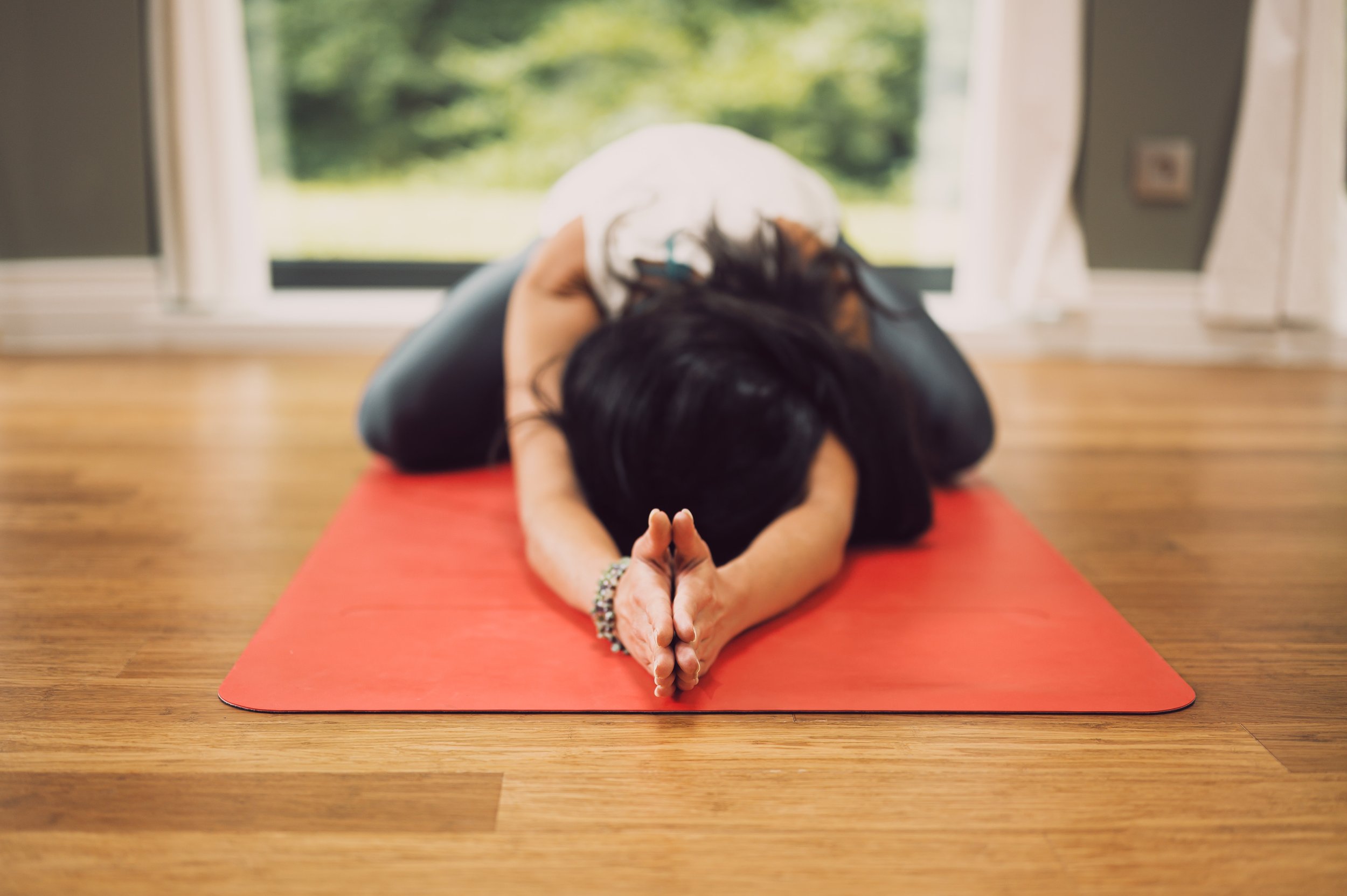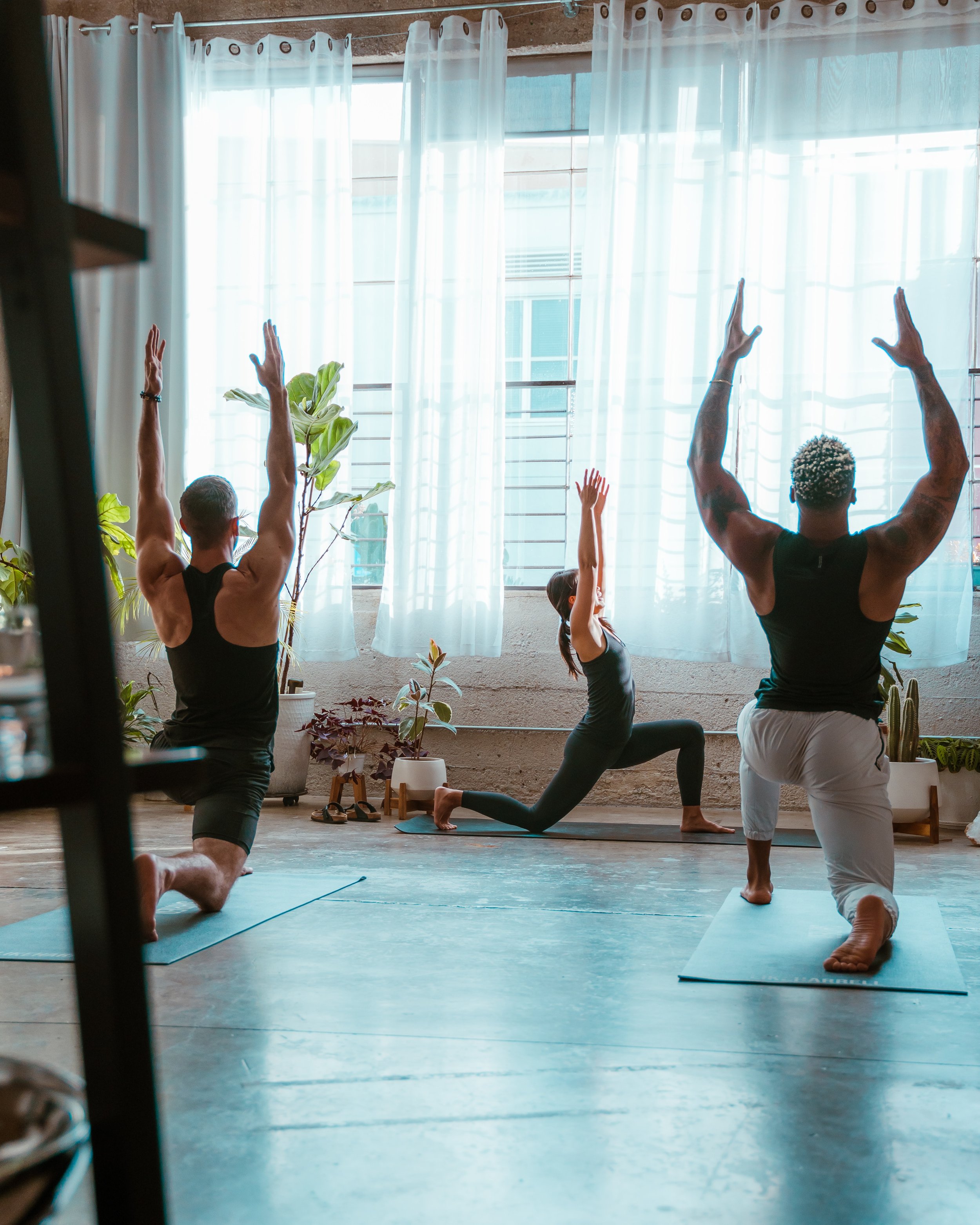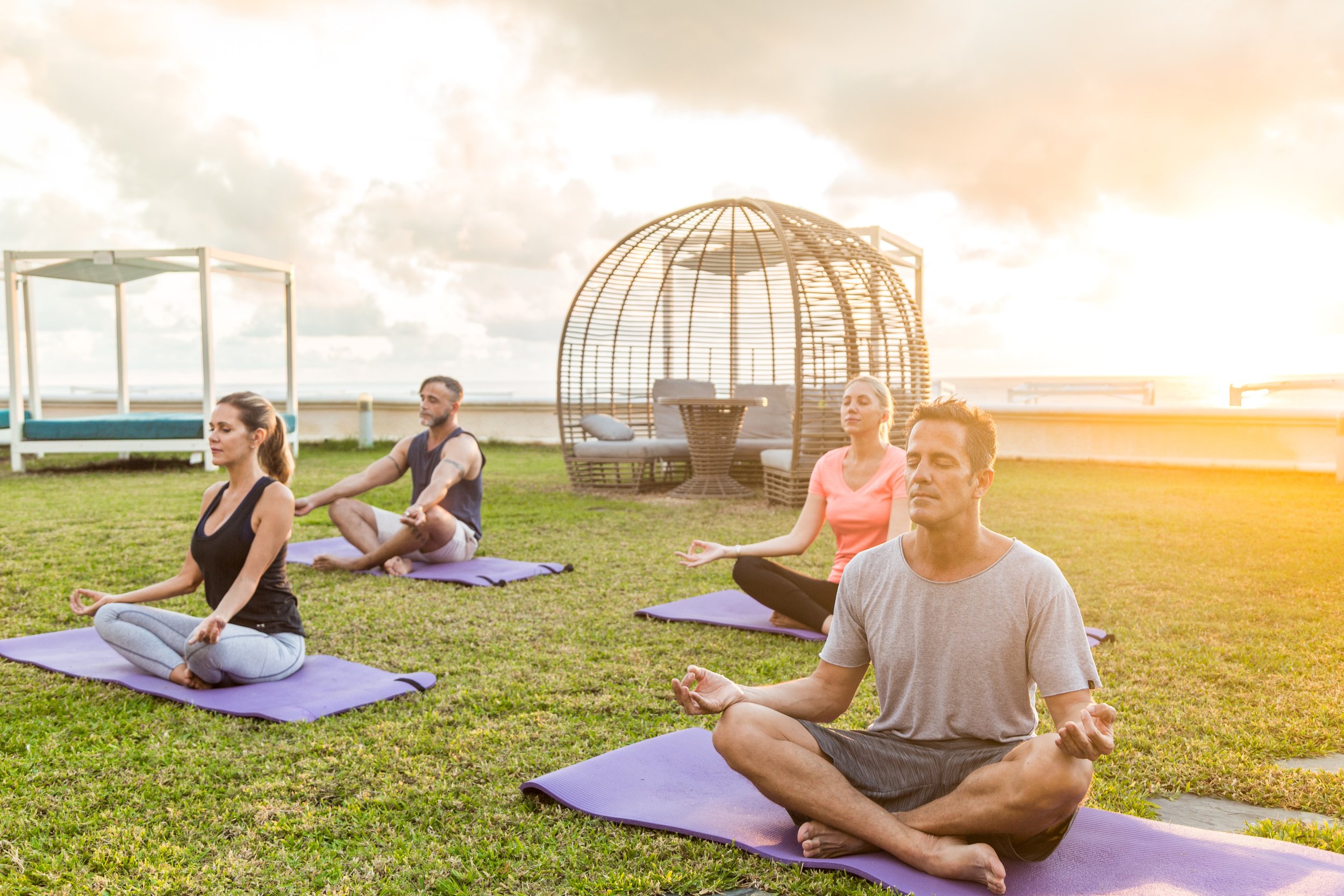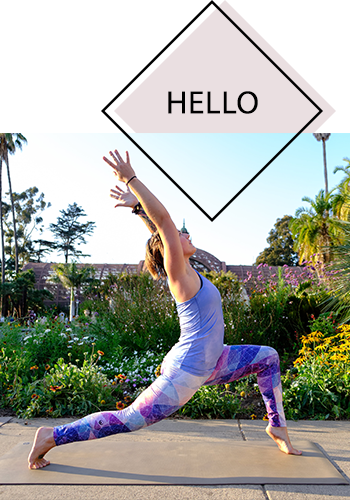How to Become a More Confident Yoga Teacher with a Yoga Cues List
/Being a new yoga teacher can test your confidence— just like when you’re new to anything, really. A yoga teacher is called to balance technical skill with authentic presence, making those early classes both exciting and nerve-wracking.
There are so many yoga sequences for teachers!
What poses should I teach tonight? Am I going too fast? Are they getting it?
I remember in the early days of teaching when I had just completed my yoga teacher training, the questions were swirling in my head. I’d think, am I ready? Am I knowledgeable enough to do this?
In many traditions, a yoga teacher is called "guru" or "guide," but in those first weeks of teaching, I felt more like a student than ever before. (Honestly, I’ve never wanted to be thought of as a guru… students often wonder what is a yoga instructor called in different traditions—whether it's guru, acharya, or simply teacher—but what matters most is creating a safe space where everyone feels welcome and supported!)
I found myself overthinking about how to sequence a yoga class, how to keep track of all of the logistics at the studios where I taught, and whether I was doing a good job or could have been doing more.
Will students like my class? Will they come back?
What if I mess up? What if I forget where I’m going in the middle of class?
Being new brought up the fear of not being good enough and the fear of failure.
Even with countless yoga sequence ideas at my fingertips, standing in front of a class for the first time could sometimes make my mind go blank and my confidence waver.
Not to mention the logistics— I had to remember how to sign people in and work the computer at the front desk, how to make a sale, how to keep the studio lighting and temperature set, how to connect my phone to the Bluetooth so I could use the speakers…
All the students’ names…
It sometimes felt like a lot.
So, to battle the anxiety and nervousness, I would plan ahead.
If I knew where I was going, some of that fear in my mind would settle and I could relax.
I’d create vinyasa sequence ideas and write out my plan for how to start a yoga class as a teacher. I’d make notes about what theme to center the class around, tie that to the yoga sequencing, and sometimes see if I could find an inspiring quote or passage to read at the end of class during savasana. I’d reflect for what felt like hours on the best yoga sequences for teachers. I’d set up my playlist and practice the class from home, noting where I needed to adjust my timing or add a silent track to give students some space and stillness to be in their own practice.
Not only was I practicing and getting better at how to create a yoga sequence, but I was practicing and getting better at handling all of the small yet important details involved in the before and after of every class in finding ways to make the experience enjoyable for students.
Eventually, I discovered this:
It helped to have a simple, effective vinyasa class that I could adapt to a one hour or 75 minute yoga class format. It wasn’t a bad thing to repeat my ‘standard’ class and teach it over and over again. Instead of needing to come up with new yoga flow sequence ideas and power yoga sequence ideas every time I taught, I could lean on my signature class (a basic vinyasa flow) and build my confidence repeating that one class.
It helped knowing I had that plan, and that if nothing else— even if I didn’t get fancy with my flows or add any complex movements to the series— I had an all-levels class I could teach, no problem. I had created my own yoga sequencing lesson plans that relied heavily on the format and structure I had learned in my training, that made sense to me, and that I had essentially memorized and could move through without thinking too hard.
Over time, I found value in writing this down. I created a basic template— a yoga class teaching script that I could read from at home to help me memorize. I could then adapt it, too, changing it from a 60 minute yoga sequence script to a 75 minute yoga sequence script, or even make it 45 minutes or 90 minutes if I needed to.
More time for meditation at the end of class, or a little less time in the balancing series.
Remember to give yourself time for the transitions, I’d tell myself. If you end up having to start 2 minutes late, adjust the template like this or skip that pose at the end.
It helped with refining my cues, too. Over time I had created a yoga cues list that listed not only the order of the poses but also the verbal cues I wanted to remember to give my students. I finally felt like instead of searching through all of the yoga sequences for teachers out there, I could simplify and just focus on teaching what I knew! Plus, I often found that my students’ ears and comprehension could only handle about 3 cues— and for newer students, sometimes it was only 1 or 2.
What are the most important cues? I’d ask myself.
Safety and alignment in the joints— and major cues for the overall structure of the pose, rather than small adjustments like in the hands or feet— became my focus. Instead of worrying so much about what to say when teaching yoga, I was starting to trust myself more and find my groove.
The best part? I was starting to feel more confident in my voice.
Having a yoga centering script helped keep my mind focused, and my nerves at ease. Generally it was a tool I’d utilize from home— I printed the yoga class script pdf so I could read from it out loud to myself as I practiced, read it to my roommates when I taught them a practice class in our living room, and read from it in the car before heading in to teach.
I remember one afternoon when a student thanked me after class, noting how one of the cues had given her more stability and less pain in her downward dog pose.
“It really clicked for me when you said to bend my knees instead of straighten my legs,” she told me.
I smiled. “Thank you for that feedback!” I told her.
I couldn’t wait to get home and highlight that cue on my yoga script and make a note. Usually I’d keep a printed copy where I took notes and then make the updates on the computer to my yoga sequences pdf. As a word-oriented person who loves writing, this meticulous work of tracking how my words were landing and how to write a yoga sequence was starting to pay off.
It’s working, I thought. Thank goodness! I was also starting to memorize my yoga sequences for beginners to the point where the classes felt familiar and I didn’t have to concentrate so hard to remember which pose was next. Plus, I didn’t need to constantly be researching yoga sequence ideas for teachers. I could just keep teaching the signature yoga class that I was starting to have down pat!
I felt so much better than during those first few classes I’d taught.
Things finally felt like they were clicking for me— and it was translating to my students.
So, is using a yoga class script or a yoga cues list ‘cheating’ as a new yoga teacher? Not for me. For me this wasn’t a crutch but a powerful tool to get me over that initial fear and the lack of confidence.
It helped me discover the power of my voice, and the cues that resonated most for me. It empowered me to feel strong and stable— and from there, to get more creative and to have more fun with it. And it helped me figure out what I wanted to say at the start and end of class, so instead of guessing on how to start a yoga class or what to say at the end of yoga class, I could relax, breathe, be myself, and say the same thing I was used to saying.
It felt like a lot of pressure off my shoulders, realizing I didn’t have to reinvent the wheel every class! It also felt like a relief that I could just be myself instead of trying to perform or entertain people.
Yoga teacher training had provided a solid foundation, but I still found that having a yoga class script was so powerful in helping me build my confidence at a deeper level. This was the unique resource I had created out of yoga teacher training in order to propel me forward in my teaching.
As you gain experience, you'll discover that the best yoga sequence ideas aren't necessarily the most complex or Instagram-worthy, but those that thoughtfully address your students' needs while allowing you to teach authentically.
The question of what do you call a yoga teacher varies across cultures and lineages, from the Sanskrit 'guru' to the more contemporary 'facilitator,' but regardless of title, your role is to guide students toward their own embodied wisdom.
Remember that yoga sequence ideas will continue to evolve as you grow as a teacher. What matters most isn't perfection but your willingness to show up with presence, compassion, and a genuine desire to serve your students.
Are you curious about trying a yoga script but not sure where to start?
This yoga scripts page on my website lists the different versions I created. There’s a basic power yoga script, a yoga script with Sanskrit names of yoga poses, and one that is a ‘slow flow’ style class (more grounding and less power poses) and features meditations to read during Savasana. If you want a beginner yoga sequence for teachers pdf, those are all great options.
That page of the website also features an e-book called Secrets of the Confident Yoga Teacher which includes interviews with over 20 experienced yoga teachers on what helped them build confidence during their early days of teaching. If you’re experiencing burnout, not sure whether to keep or ditch a class you’re teaching, or want ideas for how to market yourself using social media, that e-book is a great resource.
I also have a number of other blog posts where I’ve talked about the power of using a yoga script and how it works, if you want more information:
Finally, and as always, if you have questions, want to see a sample of a yoga script, or need financial assistance with buying one, you can reach out to me.
Remember that a yoga teacher is called to this path for a reason—your unique voice and perspective are exactly what your future students need, even when doubt tries to convince you otherwise.
Here’s the power yoga script based on the Baptiste methodology and sequencing (it’s a yoga sequence printable):
I hope that these yoga script resources reach as many yoga teachers as possible who are needing some support as they teach effective, safe classes for their students— and that as you use them, you find the inner confidence to shine and share your practice with more students! Finding the right yoga sequence for teachers to share with their students becomes less daunting over time, as you begin to trust your intuition and build a repertoire of poses and transitions that feel authentic to your teaching style.

















